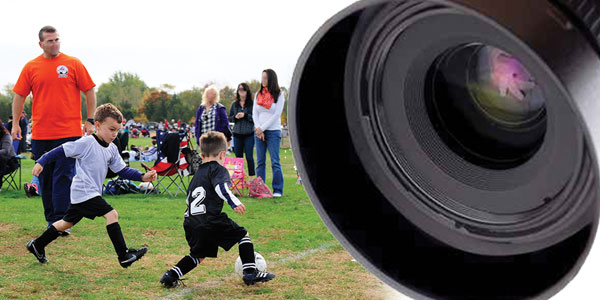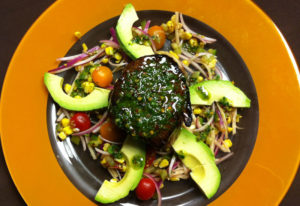 |
 Larry Kelly has been taking photos for many years. He refined his skills as an amateur photographer and went digital in 2006. A retired environmental law enforcement officer, he enjoys photography, writing, and coaching others. He can be contacted at lwkelly113@gmail.com. |
|
The big game’s coming up, you’re pumped but don’t want to drop the ball. Here’s your game plan for taking great sports photos. 1. Know Your Camera: Spend time before the big game with your camera’s manual, or exploring the menus. Many cameras have a “sports” or “action” mode setting. This setting can give good results with a minimum of tech knowledge. Don’t leave the camera on full “Auto.” Find out how to set continuous shooting, or “burst mode, ” and continuous focusing. The camera will track focus on a moving person when the shutter button is held down half way, and then take a number of shots as the button is pushed and held. That’s how to catch action. If you do have some camera knowledge and know how to make adjustments, set a fast shutter speed (1/640 sec is a good start). An aperture of f/4 to f/5.6 will blur the background but also keep action sharp, like a pro. 2. Know Your Game: You don’t need to be an expert, but the more you know about the game the better able you will be to catch those ‘’decisive moments” and great plays. Watch practice sessions, or even catch the sport on TV. Bring your camera to team practices to also practice your skills. Game time is not the time to fumble around with settings and tactics. Knowing your game also means knowing where you can stand to get the best shots. Usually, positioning behind or near a goal can give you great shots. 3. Know Your Playbook: A) Have the sun behind you, if at all possible; B) Follow the action, then shoot just before the height of the play begins; C) Aim your focus point at the face, head, or chest of the player and keep shooting; D) Position your athlete in the frame so that it looks like they are moving towards open space in the frame. For example, if they are running left to right, position your player in the left part of the frame; E) Don’t stop shooting after a score, get the high-fives too; F) Cheerleaders, crowd reactions, and team mascot antics make good pictures too; G) Take lots of pictures and be sure to have a spare battery and memory card. I hear the opening whistle! Go get ‘em, Champ! |
|












 20 lucky winners will win $500 each in prizes totaling $10,000.
20 lucky winners will win $500 each in prizes totaling $10,000. 